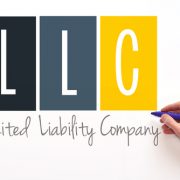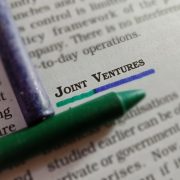Exploring Alternative Investments with a Self-Directed IRA
With U.S. stock indexes still bouncing around record highs, it’s a good time to review alternative investments – the best reason to have part of your retirement portfolio in a Self-Directed IRA.
Unlike Self-Directed IRA owners, most investors accustomed to thinking about retirement investing strictly in terms of the big three asset classes: Stocks, bonds and cash equivalents (CD’s, money markets, etc.). And these three asset classes make up the bulk of all the investments that Americans have in IRAs.
But in recent years, with interest rates extremely low on a historical basis, bonds and cash equivalents have barely kept up with inflation, except for those that are well out on the risk spectrum, such as high-yield bonds and convertibles. Asset prices are high compared to the potential returns.
Experienced investors – and most Self-Directed IRA enthusiasts – understand that when stock market prices or bond prices are high, that is when the markets are at their most dangerous. A correction to fairly valued levels from these breathtaking heights can be traumatic indeed – and history is replete with examples of stocks plunging 25 percent, 40 percent and more from levels that previously had people feeling confident in their wealth.
When the stock market is at its highest, that is the best time to diversify out of equities and into some other asset classes that still provide competitive potential returns, while having little correlation to the U.S. stock market.
Here are some popular asset classes among the small but generally relatively sophisticated investment community of Self-Directed IRA owners:
- Real estate. Of course, you can buy publicly traded real estate investment trusts and REIT funds with any IRA. But many Self-Directed IRA owners like having access to higher-yield non-publicly traded REITs. You give up a lot of liquidity, of course, but if you are skilled at selecting them, you may get rewarded with much higher income – which is shielded from tax in the IRA structure.
Many more Self-Directed IRA investors prefer owning investment real estate directly. For those who are skilled at the real estate game, the self-directed real estate IRA packs a tremendous punch combining current income, the benefits of leverage (along with its risks!), the potential for long term appreciation, and a built-in margin of safety: Unlike paper assets, real estate doesn’t become worthless during hard times.
- Private equity. The private equity market is how non-publicly traded companies recruit shareholders and partners and raise equity capital. This market is well known to entrepreneurs and venture capitalists, but is mostly closed to middle class investors because in many cases you have to be an accredited investor in order to participate. If you’re an accredited investor, though, you can benefit from some tremendous opportunities in companies at various stages below going public themselves.
Again, there’s far less liquidity and transparency in these companies. You may not get audited financial statements. You’ll have to do a lot of due diligence. But the rewards can be more than worth it, as you can buy an interest in great companies at a big discount to what you would pay for a similar company over the stock exchanges, where bidders tend to push stock prices higher because they want the liquidity and transparency that comes with public securities.
For many sophisticated investors with a long time horizon, though, the price of that kind of liquidity just isn’t worth it, when long-term returns are higher with these smaller companies.
There is a parallel market in privately placed bonds, as well, with the same dynamic: Investors who can write big checks, and commit to waiting a certain number of years for their money, have opportunities you just can’t get buying via the public exchanges. Smaller companies and non-rated bond issuers are willing to pay higher interest rates in order to save themselves the expenses of making a public bond offering
- Gold and precious metal IRAs. Gold and precious metals are a long-proven hedge against inflation, paper asset price declines and times of economic uncertainty and collapse. You can take direct ownership of certain forms of gold, silver and platinum within a Self-Directed IRA, though a few restrictions apply: You can’t take possession of it directly. You must have an IRA custodian hold the actual assets for you. And you can only hold some forms of bullion or coinage of consistent and established purity. Not every commonly collected gold, silver or platinum coin qualifies. See American IRA’s exclusive guide to precious metals IRA investing for more details.
American IRA is one of a very few financial services companies in America that specializes exclusively in providing administrative services for Self-Directed IRAs and other self-directed retirement accounts. We also provide services for those who self-direct Coverdell education savings accounts as well as self-directed Health Savings Accounts (HSAs).
For more information about American IRA, or Self-Directed IRA investing into alternative asset classes in general, contact us today at 866-7500-IRA(472).
We look forward to hearing from you.




